Are you looking to streamline your app development process and harness the power of artificial intelligence to build apps faster? In 2024, the landscape of AI tools for developers has continued to evolve, offering a wide array of solutions to simplify various aspects of application development. From natural language processing to image recognition and code generation, these tools have the potential to enhance efficiency and creativity in your development workflow.
In this article, we’ll explore the top 10 AI tools that can help developers expedite the app development process, making it easier to create smarter and more feature-rich applications.
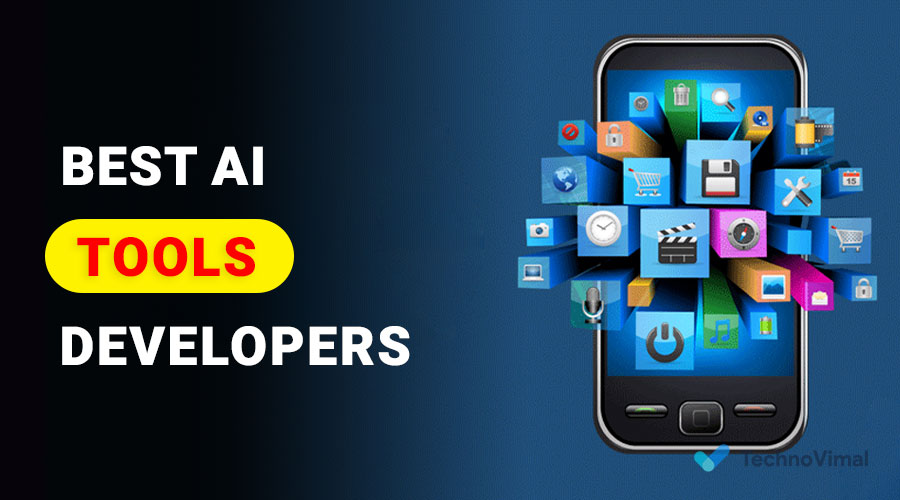
Top 10 AI Tools For Developers to Build Apps Faster in 2024
Now that we understand the importance of password managers let’s dive into the top 10 password manager tools for ultimate online security.
1: TensorFlow
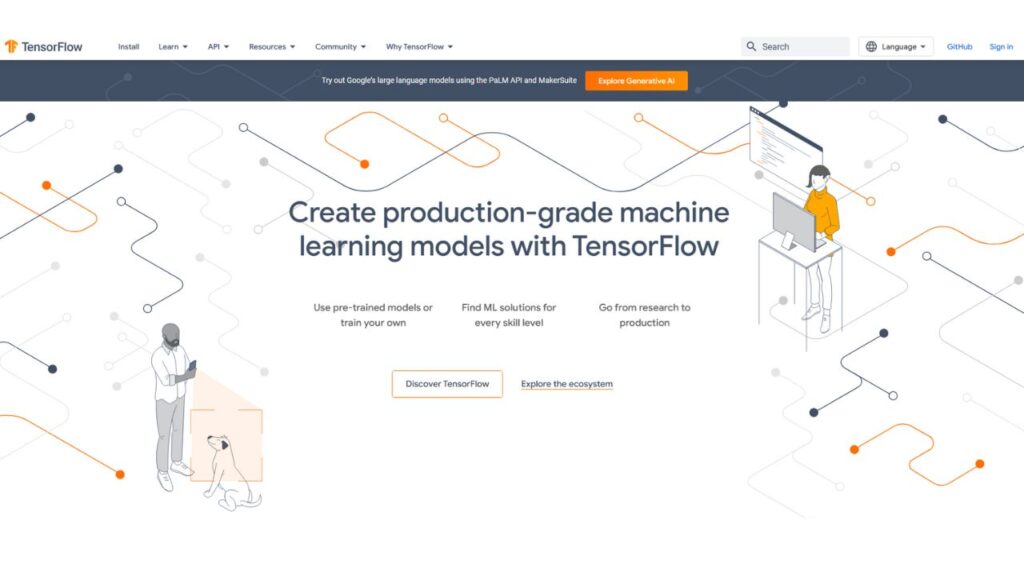
Are TensorFlow is an open-source machine learning framework developed by Google. It’s one of the most popular tools for building and deploying machine learning models. TensorFlow provides a comprehensive ecosystem for developers, including libraries and tools for both research and production purposes. With its flexible architecture, it’s suitable for various AI applications, such as image and speech recognition, natural language processing, and recommendation systems.
Read Also: 10 Best Video Quality Enhancer Software
Key Features
- Deep learning capabilities
- Scalable and flexible architecture
- Support for multiple languages
- A vast collection of pre-trained models
- Integration with TensorFlow Serving for model deployment
Use Cases
- Image classification
- Text generation
- Speech recognition
- Reinforcement learning
- Anomaly detection
2: PyTorch
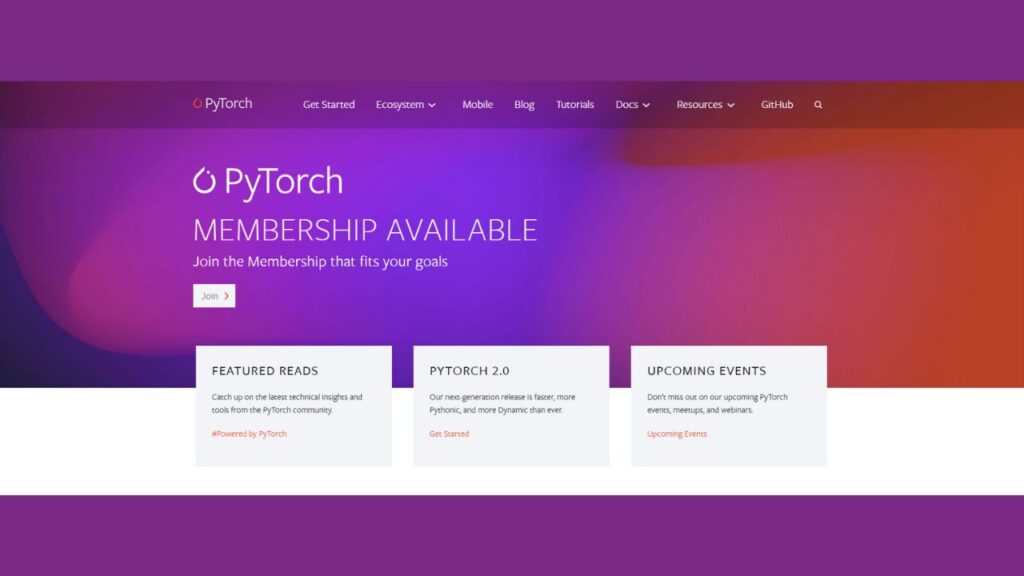
ArePyTorch is another powerful open-source machine learning library, developed by Facebook’s AI Research lab (FAIR). It is known for its dynamic computation graph, which makes it a popular choice for researchers and developers. PyTorch is highly user-friendly and offers a seamless experience when developing and training machine learning models.
Key Features
- Dynamic computation graph
- Pythonic and easy-to-use API
- Strong support for deep learning research
- Active and vibrant community
- Seamless transition from research to production
Use Cases
- Natural language processing
- Computer vision
- Reinforcement learning
- Generative adversarial networks
- Transfer learning
3: IBM Watson
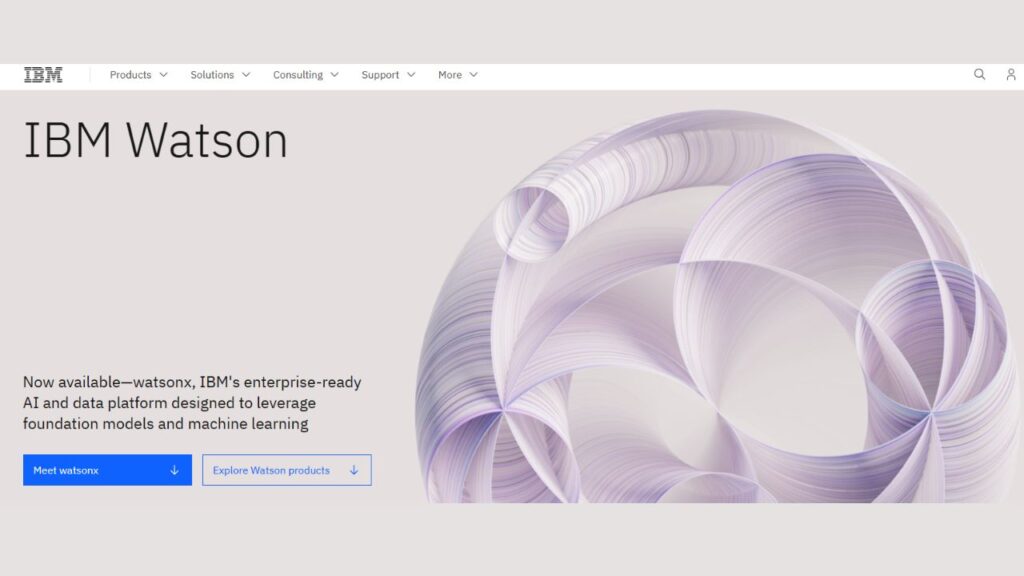
AreIBM Watson is a comprehensive AI platform that offers a wide range of AI services and tools. It provides developers with the capabilities to build, train, and deploy AI models for various applications, including natural language processing, computer vision, and predictive analytics. IBM Watson also offers cloud-based services for easy integration into applications.
Key Features
- Natural language understanding
- Visual recognition
- Chatbot development
- Predictive analytics
- Watson Assistant for building conversational interfaces
Use Cases
- Customer support chatbots
- Sentiment analysis
- Predictive maintenance
- Fraud detection
- Healthcare applications
4: Microsoft Azure Cognitive Service
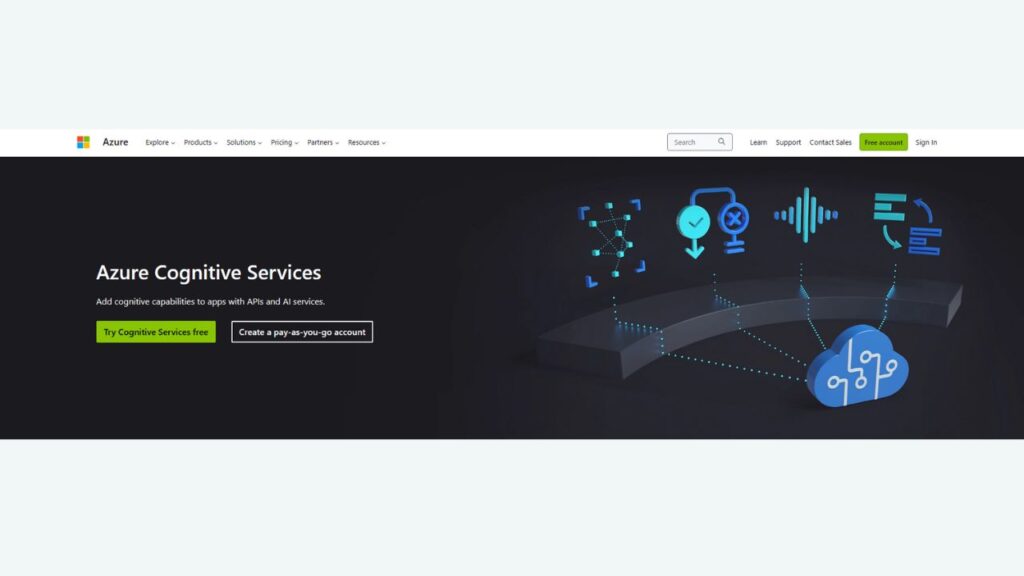
AreMicrosoft Azure Cognitive Services is a cloud-based AI platform that offers a wide range of pre-built AI models and services. Developers can access various AI capabilities through APIs, making it easy to integrate AI into their applications. The platform covers areas like computer vision, speech recognition, language understanding, and more.
Key Features
- Vision AI
- Speech AI
- Language AI
- Decision AI
- Search AI
Use Cases
- Object detection
- Speech-to-text conversion
- Language translation
- Personalized recommendations
- Enterprise search
5: Amazon Lex
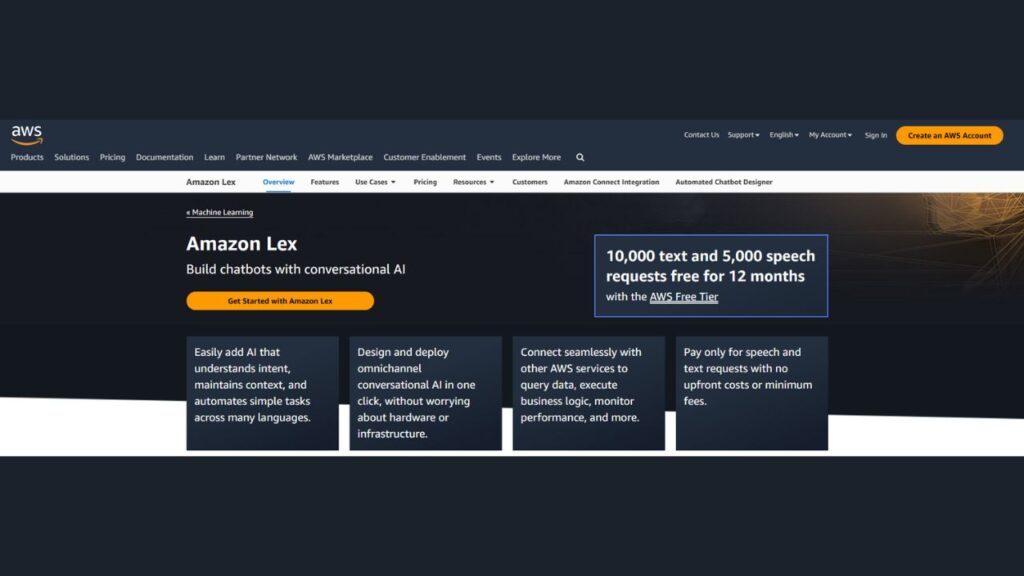
AreAmazon Lex is a service offered by Amazon Web Services (AWS) that enables developers to build conversational interfaces, such as chatbots, into their applications. It uses the same technology that powers Amazon Alexa, making it a powerful tool for natural language understanding and processing.
Key Features
- Automatic speech recognition
- Natural language understanding
- Multi-platform integration
- Built-in analytics
- Scalable and cost-effective
Use Cases
- Customer service chatbots
- Virtual assistants
- Voice-controlled applications
- Information retrieval
6: Google Cloud AI Platform
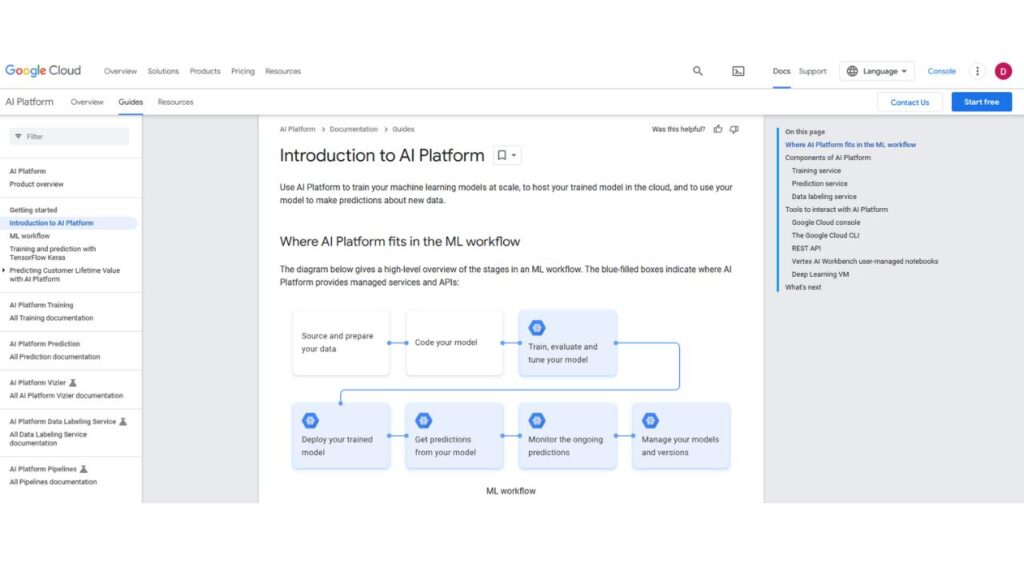
AreThe Google Cloud AI Platform is a set of tools and services offered by Google Cloud to facilitate the development and deployment of machine learning models. It provides everything from data preprocessing to model training and deployment, making it an end-to-end solution for developers.
Key Features
- Data labeling and preprocessing
- Model training and hyperparameter tuning
- Scalable infrastructure
- Model serving and monitoring
- Integration with Google Cloud services
Use Cases
- Predictive analytics
- Image and video analysis
- Speech recognition
- Recommendation systems
- Time series forecasting
7: Dialogflow
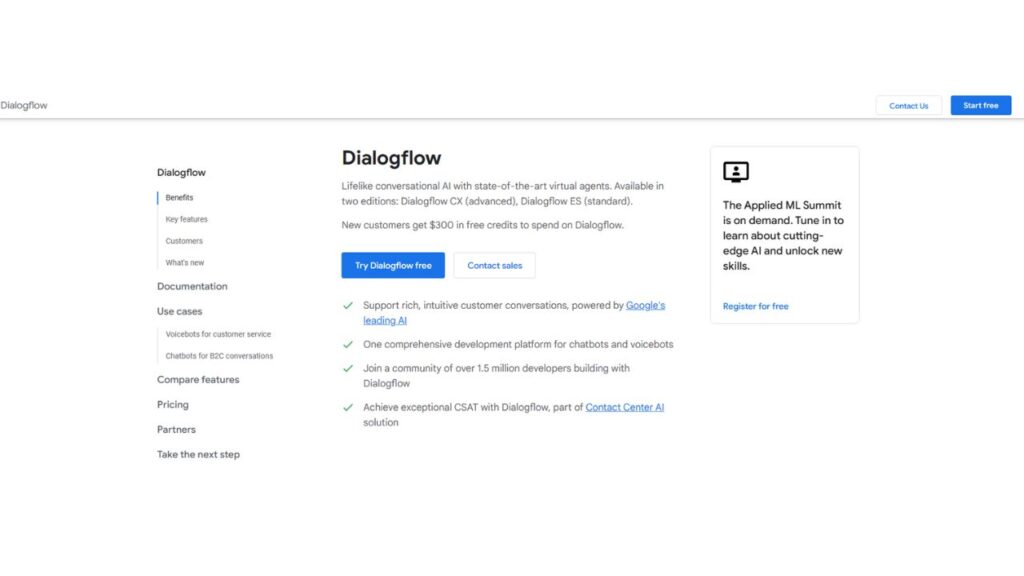
Dialogflow is a Google Cloud service for building conversational interfaces, including chatbots and voice-powered applications. It offers a user-friendly, web-based development environment that allows developers to design, build, and deploy chatbots across various platforms, including web and mobile.
Key Features
- Natural language understanding
- Multi-platform support
- Pre-built agents and templates
- Integration with various messaging platforms
- Analytics and reporting
Use Cases
- Customer support chatbots
- Virtual assistants
- E-commerce chatbots
- Voice-activated applications
8: Wit.ai
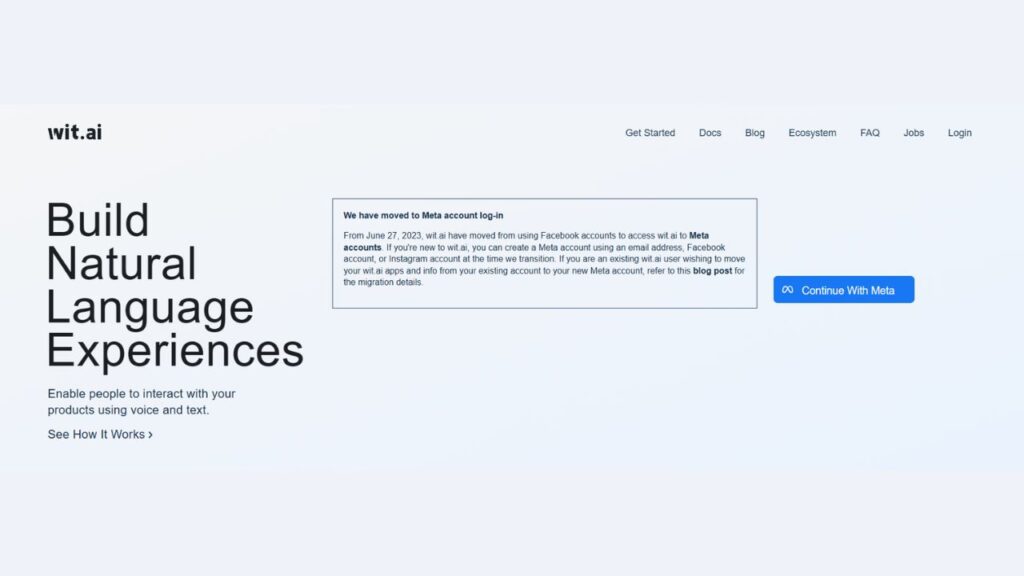
AreWit.ai is a natural language processing platform that makes it easy for developers to add speech and text recognition to their applications. It offers a simple API for building chatbots, voice interfaces, and other NLP-based applications. Wit.ai is now part of Facebook and is widely used for its simplicity and flexibility.
Key Features
- Speech recognition
- Intent recognition
- Named entity recognition
- Multilingual support
- Continuous learning
Use Cases
- Voice-controlled home automation
- Language translation
- Virtual assistants
- Social media sentiment analysis
9: Hugging Face
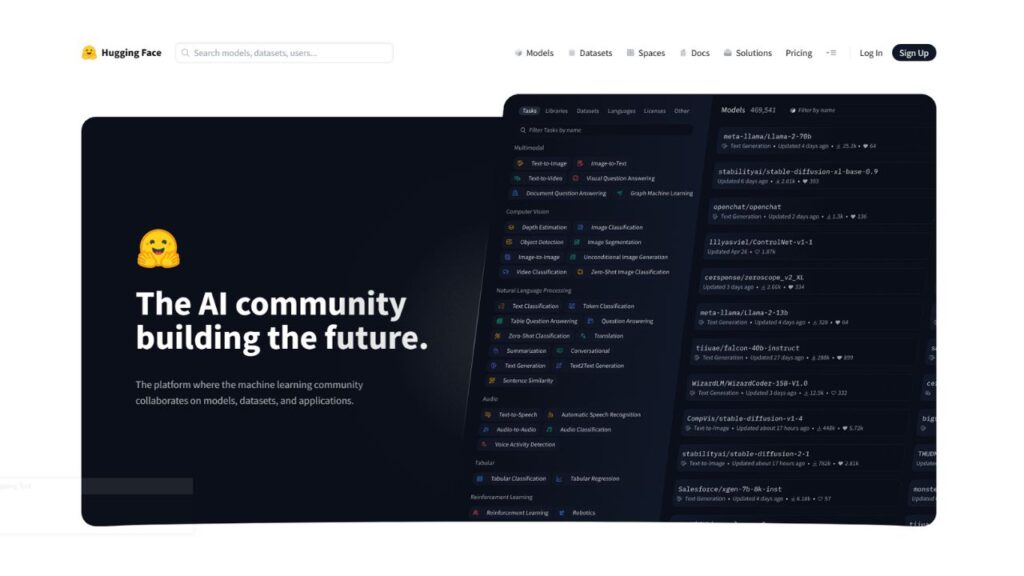
AreHugging Face is an AI research organization and a platform that specializes in natural language processing models. They provide a vast collection of pre-trained models, making it easy for developers to leverage state-of-the-art NLP capabilities. Hugging Face offers Transformers, an open-source library for working with these models.
Key Features
- Pre-trained language models
- Model fine-tuning
- Model sharing and collaboration
- Integration with popular deep learning frameworks
- Large developer community
Use Cases
- Text generation
- Sentiment analysis
- Language translation
- Chatbots and virtual assistants
- Question-answering systems
10: ML Kit
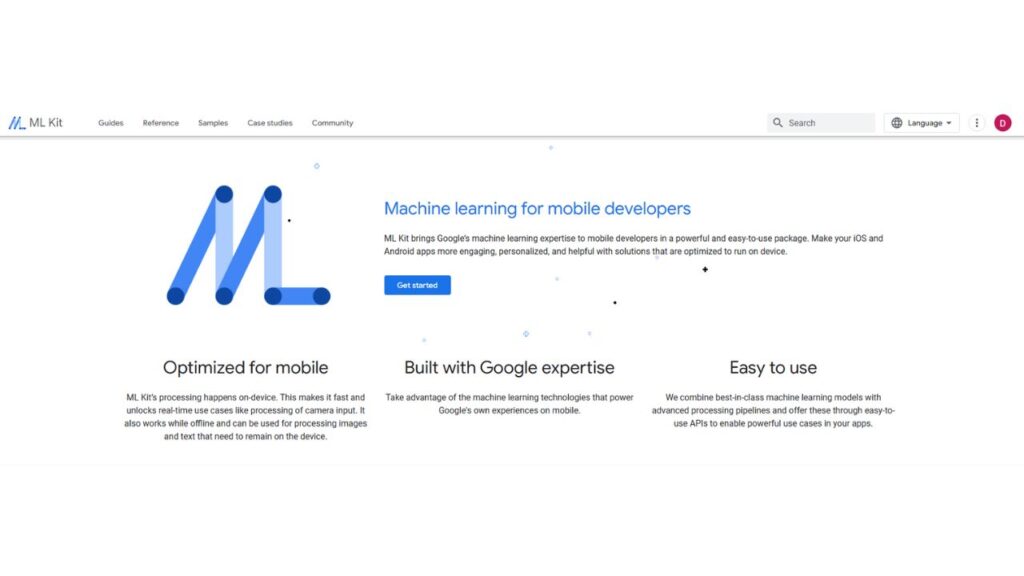
ML Kit is a mobile SDK offered by Google for integrating machine learning into Android and iOS applications. It provides a straightforward way for developers to add machine learning features to their mobile apps, including text recognition, image labeling, and face detection.
Key Features
- On-device and cloud-based ML
- Wide variety of use cases
- Easy integration with mobile apps
- Custom model support
- Real-time processing
Use Cases
- Text recognition in images
- Object detection
- Barcode scanning
- Image labeling
- Face detection and recognition
Frequently Asked Questions
AreIn this section, we’ll address some common questions that developers might have about these AI tools.
What is the difference between TensorFlow and PyTorch?
TensorFlow and PyTorch are both popular machine learning frameworks, but they have different approaches to defining and training models. TensorFlow uses a static computation graph, while PyTorch employs a dynamic graph. The choice between them often depends on personal preference and specific project requirements.
Which AI tool is best for natural language processing?
Several tools excel in natural language processing, including Hugging Face, Wit.ai, and IBM Watson. The choice depends on the specific needs of your project, as well as factors like ease of use and model availability.
Can I use multiple AI tools in a single project?
Yes, it’s possible to use multiple AI tools in a single project, especially if your application requires a variety of AI capabilities. However, integration and coordination may require additional effort.
Are there free versions or trial periods for these tools?
Many of the tools listed here offer free tiers or trial periods, allowing developers to explore and test their capabilities before committing to a paid plan. Be sure to check the pricing and offerings of each tool.
How can I choose the right AI tool for my project?
The choice of an AI tool depends on your project’s specific requirements, your team’s expertise, and your budget. Consider factors like the type of AI you need (e.g., image recognition, natural language processing) and the scalability and ease of use of the tool.
Conclusion
In this article, we’ve explored the top 10 AI tools for developers to build applications. These tools cover a wide spectrum of AI capabilities, from machine learning frameworks like TensorFlow and PyTorch to platforms like IBM Watson and Google Cloud AI. We’ve also delved into tools for specific purposes, such as natural language processing with Hugging Face and Wit.ai, and mobile app integration with ML Kit.
The choice of the right AI tool for your project depends on various factors, including the specific requirements of your application, your team’s expertise, and your budget. It’s essential to assess your needs carefully and experiment with different tools to find the best fit.
As AI continues to advance, developers have an ever-expanding toolkit at their disposal, making it possible to create innovative, intelligent applications that enhance user experiences and streamline processes. By staying up-to-date with the latest developments in the AI field and experimenting with these tools, developers can unlock new possibilities and bring their creative visions to life.
In the fast-paced world of technology, the ability to harness AI effectively can be a game-changer. Whether you’re building a chatbot, creating a recommendation system, or diving into deep learning research, these AI tools are your allies in the journey of app development.
Use Cases
- Natural language processing
- Computer vision
- Reinforcement learning
- Generative adversarial networks
- Transfer learning
3: IBM Watson

AreIBM Watson is a comprehensive AI platform that offers a wide range of AI services and tools. It provides developers with the capabilities to build, train, and deploy AI models for various applications, including natural language processing, computer vision, and predictive analytics. IBM Watson also offers cloud-based services for easy integration into applications.
Key Features
- Natural language understanding
- Visual recognition
- Chatbot development
- Predictive analytics
- Watson Assistant for building conversational interfaces
Use Cases
- Customer support chatbots
- Sentiment analysis
- Predictive maintenance
- Fraud detection
- Healthcare applications
4: Microsoft Azure Cognitive Service

AreMicrosoft Azure Cognitive Services is a cloud-based AI platform that offers a wide range of pre-built AI models and services. Developers can access various AI capabilities through APIs, making it easy to integrate AI into their applications. The platform covers areas like computer vision, speech recognition, language understanding, and more.
Key Features
- Vision AI
- Speech AI
- Language AI
- Decision AI
- Search AI
Use Cases
- Object detection
- Speech-to-text conversion
- Language translation
- Personalized recommendations
- Enterprise search
5: Amazon Lex

AreAmazon Lex is a service offered by Amazon Web Services (AWS) that enables developers to build conversational interfaces, such as chatbots, into their applications. It uses the same technology that powers Amazon Alexa, making it a powerful tool for natural language understanding and processing.
Key Features
- Automatic speech recognition
- Natural language understanding
- Multi-platform integration
- Built-in analytics
- Scalable and cost-effective
Use Cases
- Customer service chatbots
- Virtual assistants
- Voice-controlled applications
- Information retrieval
6: Google Cloud AI Platform

AreThe Google Cloud AI Platform is a set of tools and services offered by Google Cloud to facilitate the development and deployment of machine learning models. It provides everything from data preprocessing to model training and deployment, making it an end-to-end solution for developers.
Key Features
- Data labeling and preprocessing
- Model training and hyperparameter tuning
- Scalable infrastructure
- Model serving and monitoring
- Integration with Google Cloud services
Use Cases
- Predictive analytics
- Image and video analysis
- Speech recognition
- Recommendation systems
- Time series forecasting
7: Dialogflow

Dialogflow is a Google Cloud service for building conversational interfaces, including chatbots and voice-powered applications. It offers a user-friendly, web-based development environment that allows developers to design, build, and deploy chatbots across various platforms, including web and mobile.
Key Features
- Natural language understanding
- Multi-platform support
- Pre-built agents and templates
- Integration with various messaging platforms
- Analytics and reporting
Use Cases
- Customer support chatbots
- Virtual assistants
- E-commerce chatbots
- Voice-activated applications
8: Wit.ai

AreWit.ai is a natural language processing platform that makes it easy for developers to add speech and text recognition to their applications. It offers a simple API for building chatbots, voice interfaces, and other NLP-based applications. Wit.ai is now part of Facebook and is widely used for its simplicity and flexibility.
Key Features
- Speech recognition
- Intent recognition
- Named entity recognition
- Multilingual support
- Continuous learning
Use Cases
- Voice-controlled home automation
- Language translation
- Virtual assistants
- Social media sentiment analysis
9: Hugging Face

AreHugging Face is an AI research organization and a platform that specializes in natural language processing models. They provide a vast collection of pre-trained models, making it easy for developers to leverage state-of-the-art NLP capabilities. Hugging Face offers Transformers, an open-source library for working with these models.
Key Features
- Pre-trained language models
- Model fine-tuning
- Model sharing and collaboration
- Integration with popular deep learning frameworks
- Large developer community
Use Cases
- Text generation
- Sentiment analysis
- Language translation
- Chatbots and virtual assistants
- Question-answering systems
10: ML Kit

ML Kit is a mobile SDK offered by Google for integrating machine learning into Android and iOS applications. It provides a straightforward way for developers to add machine learning features to their mobile apps, including text recognition, image labeling, and face detection.
Key Features
- On-device and cloud-based ML
- Wide variety of use cases
- Easy integration with mobile apps
- Custom model support
- Real-time processing
Use Cases
- Text recognition in images
- Object detection
- Barcode scanning
- Image labeling
- Face detection and recognition
Frequently Asked Questions
AreIn this section, we’ll address some common questions that developers might have about these AI tools.
What is the difference between TensorFlow and PyTorch?
TensorFlow and PyTorch are both popular machine learning frameworks, but they have different approaches to defining and training models. TensorFlow uses a static computation graph, while PyTorch employs a dynamic graph. The choice between them often depends on personal preference and specific project requirements.
Which AI tool is best for natural language processing?
Several tools excel in natural language processing, including Hugging Face, Wit.ai, and IBM Watson. The choice depends on the specific needs of your project, as well as factors like ease of use and model availability.
Can I use multiple AI tools in a single project?
Yes, it’s possible to use multiple AI tools in a single project, especially if your application requires a variety of AI capabilities. However, integration and coordination may require additional effort.
Are there free versions or trial periods for these tools?
Many of the tools listed here offer free tiers or trial periods, allowing developers to explore and test their capabilities before committing to a paid plan. Be sure to check the pricing and offerings of each tool.
How can I choose the right AI tool for my project?
The choice of an AI tool depends on your project’s specific requirements, your team’s expertise, and your budget. Consider factors like the type of AI you need (e.g., image recognition, natural language processing) and the scalability and ease of use of the tool.
Conclusion
In this article, we’ve explored the top 10 AI tools for developers to build applications. These tools cover a wide spectrum of AI capabilities, from machine learning frameworks like TensorFlow and PyTorch to platforms like IBM Watson and Google Cloud AI. We’ve also delved into tools for specific purposes, such as natural language processing with Hugging Face and Wit.ai, and mobile app integration with ML Kit.
The choice of the right AI tool for your project depends on various factors, including the specific requirements of your application, your team’s expertise, and your budget. It’s essential to assess your needs carefully and experiment with different tools to find the best fit.
As AI continues to advance, developers have an ever-expanding toolkit at their disposal, making it possible to create innovative, intelligent applications that enhance user experiences and streamline processes. By staying up-to-date with the latest developments in the AI field and experimenting with these tools, developers can unlock new possibilities and bring their creative visions to life.
In the fast-paced world of technology, the ability to harness AI effectively can be a game-changer. Whether you’re building a chatbot, creating a recommendation system, or diving into deep learning research, these AI tools are your allies in the journey of app development.


![Free Premium Blogger Templates Download [July 2024] premium blogger template free download](https://www.technovimal.in/wp-content/uploads/2021/06/premium-blogger-template-free-download-100x70.jpg)